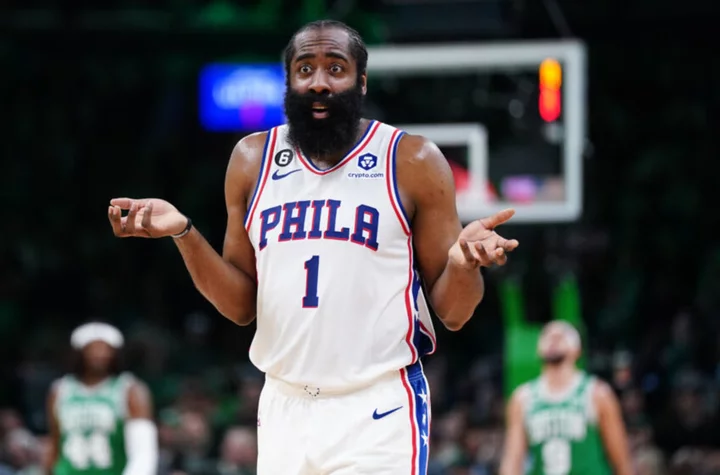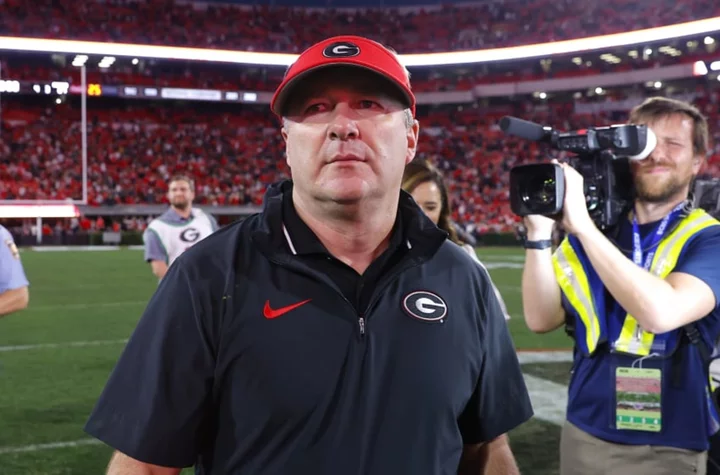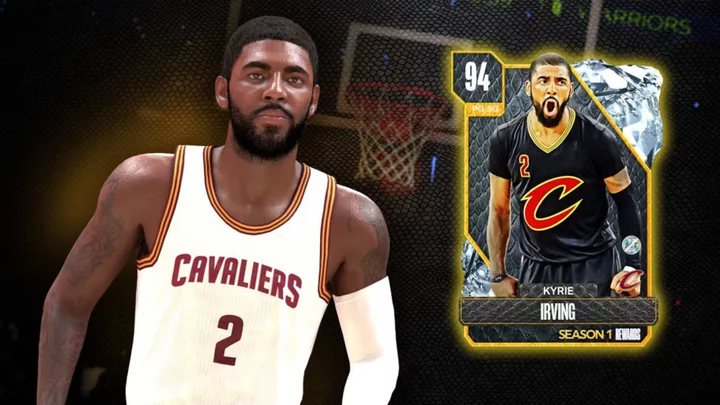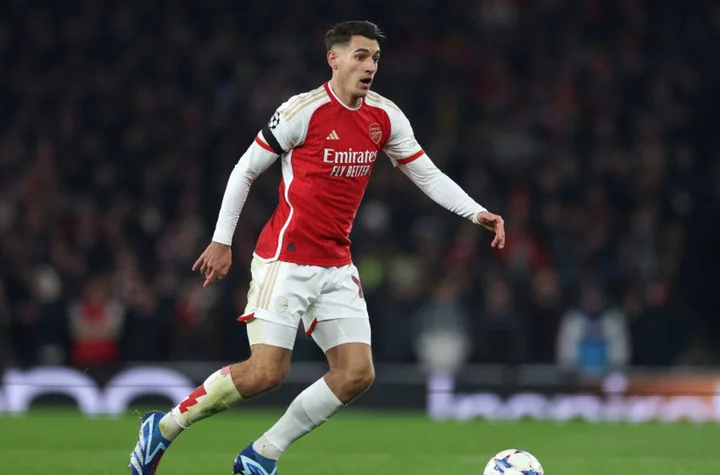No identity, no intensity: How Southampton were relegated from the Premier League
Fresh from losing the small matter of 1,063 councillors, Rishi Sunak turned up to see his club lose their Premier League status. With supporters like him, Southampton may not need enemies. Then again, perhaps they were their own worst enemies as their 11-year stay in the top flight ended with a wretched relegation. They are the club owned by Sport Republic, supposedly the experts in studying the data, but the numbers were unflattering: the worst ones used to be the 9-0 scorelines Ralph Hasenhuttl occasionally suffered. But then Southampton went down with one point from their last eight games. They are guaranteed to get their lowest points total in the era of three per win. They could end their campaign with exactly 50 per cent of their points coming against Chelsea and Leicester and a grand total of 12 against everyone else. They have taken just 14 points against the bottom nine teams. And all that in a season when they spent around £140m. James Ward-Prowse argued after last week’s defeat to Nottingham Forest that they had learned nothing all season; more accurately, they forgot lessons of previous years, when Hasenhuttl had run the club on a budget, when they had a better mentality and a more united dressing room. Southampton initially lost their identity and intensity amid a sad end to the Austrian’s tenure. Yet demotion can be traced more to others, to Sport Republic and Nathan Jones, to a series of decisions. The most flattering assessment is that Southampton were overly optimistic and idealistic; more probably, they were misguided, naïve and at times just plain wrong. Sacking Hasenhuttl when 18th and spending the majority of the rest of the season in 20th is an illustration of how choices at boardroom level made things worse; finishing the campaign under the caretaker Ruben Selles after failing in an odd attempt to get Jesse Marsch an example of how plans went awry. The Spaniard should at least finish second in Southampton’s manager-of-the-year contest; he had some decidedly mixed results, but by then Saints needed an escapologist. Selles’ interim reign highlighted some of the paradoxes of Southampton. Six of his nine points came against Chelsea, Manchester United, Tottenham and Arsenal. Four of Hasenhuttl’s came at the expense of Chelsea and Arsenal too; if it suggested Southampton were more suited to the European Super League than the Premier League, they kept on procuring bonus points. But compile a league table without the supposed big six and they are miles adrift. The apparently winnable games weren’t winnable. That was especially apparent at St Mary’s. Nottingham Forest have got one away win this season: at Southampton. Everton and Wolves have two apiece: in each case, one was in Hampshire. For good measure, Saints lost at home to Crystal Palace, Brentford and Bournemouth under Selles. Jones had a clean sweep: his four home fixtures were against Brighton, Forest, Aston Villa and ten-man Wolves. They were four of the kind Southampton needed to target. They lost all four. Jones’ reign was more of a cameo, with eight league matches barely more than a fifth of the season. Yet the fixture list afforded him fixtures where Southampton probably required ten points. They took just three. They were playing catch-up ever since, drained of momentum, sucked to the foot of the table, only escaping it briefly in March. Those eight games capsized their chances. Fault can be found with Jones, with his strange selections and multiple formations and style of play that prompted the crowd to chorus “your football is sh*t”. More lies with those who appointed and anointed him, Southampton compiling a one-man shortlist at a time when Villa and Wolves were targeting the Europa League winners Unai Emery and Julen Lopetegui, who both went on to have transformative effects. Southampton went for Jones, a great overachiever at Luton but – and it does not require hindsight to say this – lacking the temperament, persona or credibility needed to survive in the Premier League spotlight. The Jones interlude proved a bizarre 94 days starring a man who declared himself one of the best coaches in Europe, containing an unnecessary and public argument with the manager of Havant and Waterlooville and involving a sliding-doors scenario where he settled down with a Welsh girl and became a PE teacher. Only Southampton supporters were disappointed when Jones was dismissed, because he had offered neutrals too much unwitting entertainment. It meant that even the subsequent home FA Cup defeat to Grimsby was not the most ignominious part of the season. Jones was not Sport Republic’s only mistake. CEO Rasmus Ankersen’s excellent record in the transfer market as Brentford’s director of football suggested he would be a fine fit for Southampton who, especially in the first few years after promotion in 2012, excelled at finding players, polishing them up and selling them for sizeable profits. Indeed, in Romeo Lavia, Armel Bella-Kotchap and Carlos Alcaraz, they unearthed three who are destined for better things, though relegation reduces the price Southampton can demand. Yet a policy was taken too far. Too many other signings scarcely seemed ready. Southampton seemed to overlook or underestimate the pragmatic realities of staying in the league. Crucially, they left themselves too weak in both penalty boxes. Hiring head of recruitment Joe Shields from Manchester City and allowing him to send the best part of £50m back to City came at a cost, for all Lavia’s promise. Juan Larios and Samuel Edozie were not ready for the Premier League. Gavin Bazunu, a £16m gamble of a goalkeeper, had never previously played above League One. His save percentage is a miserable 54. Go by charts for post-shot expected goals and he was the worst keeper in the Premier League. Go by the naked eye and there were too many damaging errors. Selles eventually dropped him, but too late. Meanwhile, Southampton’s focus on the future seemed to blind them to the pragmatic need for a striker for now. Danny Ings was never really replaced, though his exit was camouflaged by Armando Broja last season. The one forward Southampton did buy last summer, Sekou Mara, got a lone league goal: only Che Adams, Ward-Prowse and Alcaraz have more than two. And in the season Southampton started to spend, they did it in scattergun style. After Hasenhuttl’s years of austerity, their expenditure approached £150m . Factor in Duje Caleta-Car and Joe Aribo and six of last summer’s eight main arrivals failed. January seemed to consist of throwing good money after bad. Alcaraz is a huge talent but Jones’ Luton crony James Bree wasn’t good enough. Kamaldeen Sulemana was the quickest player at the World Cup but rarely uses his pace to accomplish anything. Southampton sought another kind of physicality from Paul Onuachu, the 6ft 7in centre-forward who was prolific in Belgium. ‘Tall Paul’ dropped out of the team after three games, out of the squad a couple of months later. Most damningly, Mislav Orsic, a scorer in the World Cup’s third-placed play-off, was given six minutes of Premier League action and soon banished from the squad. This, it is fair to say, was no masterplan. Jones had his favourites, Selles his, but there was no continuity, no cohesion, no chemistry. Along with Arsenal, Southampton had the youngest team in the Premier League. Along with Chelsea, they used the most players. Each statistic tells a tale. Saints were too callow at times. Whereas Hasenhuttl used to prefer to work with small groups, they ended up with too many players after incoherent splurges in successive windows. Amid the ever growing cast list, there should have been the basis of a fine Premier League team – Kyle Walker-Peters, Romain Perraud, Mohammed Salisu, Bella-Kotchap and, when fit again, Tino Livramento in defence, Lavia, Ward-Prowse, Alcaraz and Stuart Armstrong in midfield – but glaring weaknesses in goal and attack would have always rendered theirs a tough task. But that was a consequence of awful judgements, in the transfer market and in a managerial hunt that consisted of arrowing in on the wrong man. In their own way, Sport Republic made Southampton the Chelsea of the south coast, thinking they were cleverer than everyone else, spending too much and getting far worse. Read More Standards have not been good enough – Ruben Selles on Southampton’s relegation Southampton relegated by defeat to Fulham as Aleksansdar Mitrovic returns with a goal Coventry City aiming to come full circle after journey to hell and back Dean Smith counting on character and decision-making in Leicester survival fight Arsenal won’t stop digging for Premier League prize, Mikel Arteta vows Roy Hodgson: I won’t be telling Southgate to pick Eberechi Eze for England
Fresh from losing the small matter of 1,063 councillors, Rishi Sunak turned up to see his club lose their Premier League status. With supporters like him, Southampton may not need enemies. Then again, perhaps they were their own worst enemies as their 11-year stay in the top flight ended with a wretched relegation. They are the club owned by Sport Republic, supposedly the experts in studying the data, but the numbers were unflattering: the worst ones used to be the 9-0 scorelines Ralph Hasenhuttl occasionally suffered.
But then Southampton went down with one point from their last eight games. They are guaranteed to get their lowest points total in the era of three per win. They could end their campaign with exactly 50 per cent of their points coming against Chelsea and Leicester and a grand total of 12 against everyone else. They have taken just 14 points against the bottom nine teams.
And all that in a season when they spent around £140m. James Ward-Prowse argued after last week’s defeat to Nottingham Forest that they had learned nothing all season; more accurately, they forgot lessons of previous years, when Hasenhuttl had run the club on a budget, when they had a better mentality and a more united dressing room.
Southampton initially lost their identity and intensity amid a sad end to the Austrian’s tenure. Yet demotion can be traced more to others, to Sport Republic and Nathan Jones, to a series of decisions. The most flattering assessment is that Southampton were overly optimistic and idealistic; more probably, they were misguided, naïve and at times just plain wrong.
Sacking Hasenhuttl when 18th and spending the majority of the rest of the season in 20th is an illustration of how choices at boardroom level made things worse; finishing the campaign under the caretaker Ruben Selles after failing in an odd attempt to get Jesse Marsch an example of how plans went awry. The Spaniard should at least finish second in Southampton’s manager-of-the-year contest; he had some decidedly mixed results, but by then Saints needed an escapologist.
Selles’ interim reign highlighted some of the paradoxes of Southampton. Six of his nine points came against Chelsea, Manchester United, Tottenham and Arsenal. Four of Hasenhuttl’s came at the expense of Chelsea and Arsenal too; if it suggested Southampton were more suited to the European Super League than the Premier League, they kept on procuring bonus points. But compile a league table without the supposed big six and they are miles adrift. The apparently winnable games weren’t winnable.
That was especially apparent at St Mary’s. Nottingham Forest have got one away win this season: at Southampton. Everton and Wolves have two apiece: in each case, one was in Hampshire. For good measure, Saints lost at home to Crystal Palace, Brentford and Bournemouth under Selles.
Jones had a clean sweep: his four home fixtures were against Brighton, Forest, Aston Villa and ten-man Wolves. They were four of the kind Southampton needed to target. They lost all four. Jones’ reign was more of a cameo, with eight league matches barely more than a fifth of the season. Yet the fixture list afforded him fixtures where Southampton probably required ten points. They took just three. They were playing catch-up ever since, drained of momentum, sucked to the foot of the table, only escaping it briefly in March. Those eight games capsized their chances.
Fault can be found with Jones, with his strange selections and multiple formations and style of play that prompted the crowd to chorus “your football is sh*t”. More lies with those who appointed and anointed him, Southampton compiling a one-man shortlist at a time when Villa and Wolves were targeting the Europa League winners Unai Emery and Julen Lopetegui, who both went on to have transformative effects. Southampton went for Jones, a great overachiever at Luton but – and it does not require hindsight to say this – lacking the temperament, persona or credibility needed to survive in the Premier League spotlight.
The Jones interlude proved a bizarre 94 days starring a man who declared himself one of the best coaches in Europe, containing an unnecessary and public argument with the manager of Havant and Waterlooville and involving a sliding-doors scenario where he settled down with a Welsh girl and became a PE teacher.
Only Southampton supporters were disappointed when Jones was dismissed, because he had offered neutrals too much unwitting entertainment. It meant that even the subsequent home FA Cup defeat to Grimsby was not the most ignominious part of the season.
Jones was not Sport Republic’s only mistake. CEO Rasmus Ankersen’s excellent record in the transfer market as Brentford’s director of football suggested he would be a fine fit for Southampton who, especially in the first few years after promotion in 2012, excelled at finding players, polishing them up and selling them for sizeable profits. Indeed, in Romeo Lavia, Armel Bella-Kotchap and Carlos Alcaraz, they unearthed three who are destined for better things, though relegation reduces the price Southampton can demand.
Yet a policy was taken too far. Too many other signings scarcely seemed ready. Southampton seemed to overlook or underestimate the pragmatic realities of staying in the league. Crucially, they left themselves too weak in both penalty boxes.
Hiring head of recruitment Joe Shields from Manchester City and allowing him to send the best part of £50m back to City came at a cost, for all Lavia’s promise. Juan Larios and Samuel Edozie were not ready for the Premier League. Gavin Bazunu, a £16m gamble of a goalkeeper, had never previously played above League One. His save percentage is a miserable 54. Go by charts for post-shot expected goals and he was the worst keeper in the Premier League. Go by the naked eye and there were too many damaging errors. Selles eventually dropped him, but too late.
Meanwhile, Southampton’s focus on the future seemed to blind them to the pragmatic need for a striker for now. Danny Ings was never really replaced, though his exit was camouflaged by Armando Broja last season. The one forward Southampton did buy last summer, Sekou Mara, got a lone league goal: only Che Adams, Ward-Prowse and Alcaraz have more than two.
And in the season Southampton started to spend, they did it in scattergun style. After Hasenhuttl’s years of austerity, their expenditure approached £150m . Factor in Duje Caleta-Car and Joe Aribo and six of last summer’s eight main arrivals failed.
January seemed to consist of throwing good money after bad. Alcaraz is a huge talent but Jones’ Luton crony James Bree wasn’t good enough. Kamaldeen Sulemana was the quickest player at the World Cup but rarely uses his pace to accomplish anything. Southampton sought another kind of physicality from Paul Onuachu, the 6ft 7in centre-forward who was prolific in Belgium. ‘Tall Paul’ dropped out of the team after three games, out of the squad a couple of months later.
Most damningly, Mislav Orsic, a scorer in the World Cup’s third-placed play-off, was given six minutes of Premier League action and soon banished from the squad. This, it is fair to say, was no masterplan. Jones had his favourites, Selles his, but there was no continuity, no cohesion, no chemistry.
Along with Arsenal, Southampton had the youngest team in the Premier League. Along with Chelsea, they used the most players. Each statistic tells a tale. Saints were too callow at times. Whereas Hasenhuttl used to prefer to work with small groups, they ended up with too many players after incoherent splurges in successive windows.
Amid the ever growing cast list, there should have been the basis of a fine Premier League team – Kyle Walker-Peters, Romain Perraud, Mohammed Salisu, Bella-Kotchap and, when fit again, Tino Livramento in defence, Lavia, Ward-Prowse, Alcaraz and Stuart Armstrong in midfield – but glaring weaknesses in goal and attack would have always rendered theirs a tough task.
But that was a consequence of awful judgements, in the transfer market and in a managerial hunt that consisted of arrowing in on the wrong man. In their own way, Sport Republic made Southampton the Chelsea of the south coast, thinking they were cleverer than everyone else, spending too much and getting far worse.
Read More
Standards have not been good enough – Ruben Selles on Southampton’s relegation
Southampton relegated by defeat to Fulham as Aleksansdar Mitrovic returns with a goal
Coventry City aiming to come full circle after journey to hell and back
Dean Smith counting on character and decision-making in Leicester survival fight
Arsenal won’t stop digging for Premier League prize, Mikel Arteta vows
Roy Hodgson: I won’t be telling Southgate to pick Eberechi Eze for England









